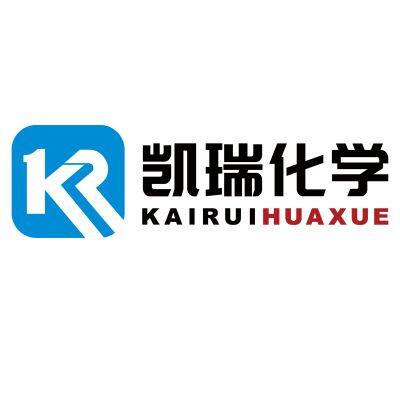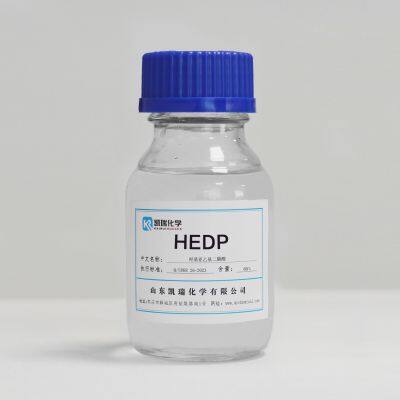Home > Products > Phosphonates Antiscalants, Corrosion Inhibitors and Chelating Agents > What Are the Solubility and Stability of HEDP?
What Are the Solubility and Stability of HEDP?
- QINGDAO,SHANGHAI
- T/T L/C D/P D/A Credit Card PayPal Cash Escrow Other
- 15 days
You May Like
-
How Does HEDP Work in Water Treatment?
-
The Mechanism of Action of ATMP as a Corrosion Inhibitor and Scale Inhibitor
-
The Mechanism of Action of HEDP as a Corrosion and Scale Inhibitor
-
Application of HEDP in Daily Chemicals
-
Application of ATMP in Daily Chemicals/ATMP Manufacturers
-
What is the Specific Application of HEDP in Metal Corrosion Protection?
Product Details
| Place of Origin | China | Type | Other, Corrosion Inhibitors | |
| Purity | https://www.krwater.com/01-HEDP.htm | EINECS No. | 220-552-8 | |
| MF | https://www.kairuiwater.com/hedp.htm | CAS No. | 2809-21-4 | |
| Usage | Other, Coating Auxiliary Agents, Paper Chemicals, Petroleum Additives, Surfactants, Textile Auxiliary Agents, Water Treatment Chemicals, chemical |
Product Description
HEDP (1-Hydroxy Ethylidene-1,1-Diphosphonic Acid) is a widely used organic phosphonate in water treatment, known for its excellent scale and corrosion inhibition properties. Its solubility and stability are key factors that determine its effectiveness in various applications. Below is a detailed analysis of these properties:
Solubility of HEDP
Water Solubility:
HEDP is highly soluble in water, which makes it easy to dose and distribute in aqueous systems.
Its solubility in water is typically >50% (w/w), allowing it to be used in high-concentration formulations.
This high solubility ensures rapid dissolution and uniform distribution in water treatment systems.
Solubility in Other Solvents:
HEDP is also soluble in some organic solvents, such as alcohols and glycols, which makes it suitable for use in non-aqueous systems or as part of multi-component formulations.
pH Dependence:
The solubility of HEDP is relatively stable across a wide pH range, but it may decrease slightly under highly acidic conditions (pH <4).
Stability of HEDP
Thermal Stability:
HEDP is thermally stable under normal operating conditions (up to 200°C).
At higher temperatures, it may begin to degrade, reducing its effectiveness as a scale and corrosion inhibitor.
In boiler systems or high-temperature applications, its stability should be carefully monitored.
Chemical Stability:
HEDP is chemically stable in most water treatment environments, including those containing oxidizing agents (e.g., chlorine or bromine).
However, it may degrade in the presence of strong oxidizing agents or under extreme pH conditions (very acidic or very alkaline).
pH Stability:
HEDP is stable over a wide pH range (pH 2–12), making it suitable for most industrial water systems.
Outside this range, its stability may decrease, particularly under highly acidic conditions.
Compatibility with Other Chemicals:
HEDP is compatible with many common water treatment chemicals, such as scale inhibitors, dispersants, and other corrosion inhibitors.
However, its compatibility with strong oxidizing biocides (e.g., chlorine or ozone) should be verified, as these may degrade HEDP over time.
Environmental Stability:
HEDP is relatively stable in the environment but can degrade under certain conditions (e.g., exposure to UV light or microbial activity).
Its degradation products are generally non-toxic, making it environmentally friendly.
Factors Affecting Solubility and Stability
Temperature:
High temperatures can reduce the solubility and stability of HEDP, particularly in boiler systems or high-temperature cooling water systems.
pH:
Extreme pH conditions (very acidic or very alkaline) can affect both solubility and stability.
Oxidizing Agents:
Strong oxidizing agents (e.g., chlorine, bromine, or ozone) may degrade HEDP over time.
Concentration:
At very high concentrations, HEDP may precipitate or form complexes with other ions in the water, reducing its effectiveness.
Applications of HEDP
Cooling Water Systems:
Prevents scale formation and corrosion in cooling towers and heat exchangers.
Boiler Water Treatment:
Controls scale and corrosion in boiler systems, particularly in high-temperature environments.
Reverse Osmosis (RO) Systems:
Used as a scale inhibitor to prevent fouling on RO membranes, extending membrane life and maintaining system efficiency.
Oil and Gas Industry:
Treats water used in drilling and hydraulic fracturing to prevent scale formation and corrosion.
Metalworking Fluids:
Used as a corrosion inhibitor in cutting fluids and other metalworking applications.
Advantages of HEDP
High Solubility:
Easily dissolves in water, ensuring uniform distribution in treatment systems.
Broad pH Stability:
Effective over a wide pH range, making it versatile for various applications.
Effective Scale and Corrosion Inhibition:
Provides excellent protection against scale formation and corrosion.
Compatibility:
Works well with other water treatment chemicals.
Limitations of HEDP
Temperature Sensitivity:
May degrade at high temperatures, limiting its use in boiler systems or high-temperature applications.
Oxidizing Agent Sensitivity:
Can degrade in the presence of strong oxidizing agents.
Cost:
May be more expensive than some alternative scale and corrosion inhibitors.
Summary of Solubility and Stability
| Property | Details |
|---|---|
| Water Solubility | >50% (w/w), highly soluble in water |
| Solvent Solubility | Soluble in alcohols and glycols |
| Thermal Stability | Stable up to 200°C; degrades at higher temperatures |
| Chemical Stability | Stable in most water treatment environments; degrades with strong oxidizers |
| pH Stability | Stable in pH 2–12; less stable under extreme acidic or alkaline conditions |
| Environmental Stability | Degrades under UV light or microbial activity; non-toxic byproducts |
Conclusion
HEDP is a highly effective scale and corrosion inhibitor with excellent solubility and stability under normal operating conditions. Its high water solubility and broad pH stability make it suitable for a wide range of applications, particularly in cooling water and boiler systems. However, its performance may be limited in high-temperature environments or in the presence of strong oxidizing agents. By understanding its solubility and stability characteristics, HEDP can be used effectively to prevent scale formation and corrosion in various industrial water systems.
Contact Us

- Shandong Kairui Chemistry Co., Ltd.
Product Categories
New Products
-
HMDTMPA/Water Treatment Chemicals/Corrosion Inhibitors/HMDTMPA Manufacturers
-
How to Package Copper Corrosion Inhibitor TTA.Na
-
In What Fields Can ATBS.Na be Applied?
-
In What Fields Can PBTC.Na4 be Applied?
-
OA-12/Lauryl Dimethyl Amine Oxide/Ammonyxao/Cationic Surfactant
-
In What Areas Can PESA be Used?
-
OTAC/Surface Treatment Chemicals
-
Chemical PCA/Dispersants PCA/PCA
-
PASP Manufacturer/Dispersants PASP
-
PAC Applications/PAC Manufacturers
-
In What Fields Are Polymers Mainly Used?
-
GLDA.Na4 User Manual
-
Glutamic Acid,N,N-diacetic Acid, Tetra Sodium Salt GLDA.Na4/Surfactant
-
Application Principle of MGDA.Na3 in Daily Chemicals
-
Application of ATMP•Na4 in Daily Chemicals
-
Trichloroisocyanuric Acid TCCA Instructions
-
Main Components and Uses of BIT
-
Performance and Application of SSS/MA
-
What is the Cas of PCA?
-
1-Hydroxy Ethylidene-1,1-Diphosphonic Acid (HEDP)
-
Amino Trimethylene Phosphonic Acid (ATMP)
-
2-Phosphonobutane -1,2,4-Tricarboxylic Acid (PBTC)
-
Diethylene Triamine Penta (Methylene Phosphonic Acid) (DTPMPA)
-
Water Treatment Chemical/Ethylene Diamine Tetra (Methylene Phosphonic Acid) EDTMPA (Solid)
Popular Searches
Recommended Products
- High-Quality RDP: Anti-Caking and Reliable Alternative to Vinnapas 5010N
- HIFULL Hydrophobic Fumed Silicon Dioxide Nanoparticles HB-202N Sio2 Fumed Silica Powder Manufacturer Price
- HIFULL High Purity HB-701 Dental Composite Resins Nanoscale Hydrophobic Fumed Silica Powder Super Fine Silicon Dioxide Coating
- HIFULL Hydrophilic Fumed Alumina for Lithium Battery Separator Nano Grade Fumed Aluminum Oxide Granules Aluna-100
- HIFULL Nano Grade Hydrophilic Anatase Rutile Mixed Crystal Structure Tio2 NT-50 P25 Hydrophilic Fumed Titanium Dioxide
- HIFULL Industrial Grade Hydrophobic Fumed Silica Powder HB-615 Fine Nanoparticle Pyrogenic Silica Liquid Coating Factory Price
- HIFULL Industrial Grade HMDS Treated Hydrophobic Fumed Silica HB-612 Nano Silicon Dioxide Powder White Carbon Coating Rubber
- HIFULL HL-450 Amorphous Hydrophilic Fumed Silica Sio2 Nano Particles Silicon Dioxide Reinforcing Filler Powder Coating
- Hot Sale Hydrophilic Fumed Silica HL-150 Nano Silicon Dioxide Thickening Epoxy Resin With BOM/One-stop Service
- HIFULL HTV LSR Reinforcing Filler Nanoscale White Carbon Black Hydrophilic Silica (Pyrogenic Silicon Dioxide) Hydrophilic Powder
- HIFULL HL-90 Nano Silica Amorphous Colloidal Silicon Dioxide Powder Fumed Silica Nanoparticles for Rubber Synthesis
- HIFULL Hydrophilic Fumed Silica Powder Nanoscale Food Grade Oxide Free Flow Aid FA35 White Carbon Black Silica Dioxide Particles
Find Similar Products By Category
- Chemicals > Chemical Auxiliary & Catalyst > Chemical Auxiliary
- Please Enter your Email Address
- Please enter the content for your inquiry.
We will find the most reliable suppliers for you according to your description.
Send Now-
 sales
Hi there! Welcome to my shop. Let me know if you have any questions.
sales
Hi there! Welcome to my shop. Let me know if you have any questions.
Your message has exceeded the limit.

- Contact supplier for lowest price
- Customized Request
- Request Sample
- Request Free Catalogs
Your message has exceeded the limit.
-
Purchase Quantity
-
*Sourcing Details
Your inquiry content must be between 10 to 5000 characters.
-
*Email
Please enter Your valid email address.
-
Mobile



